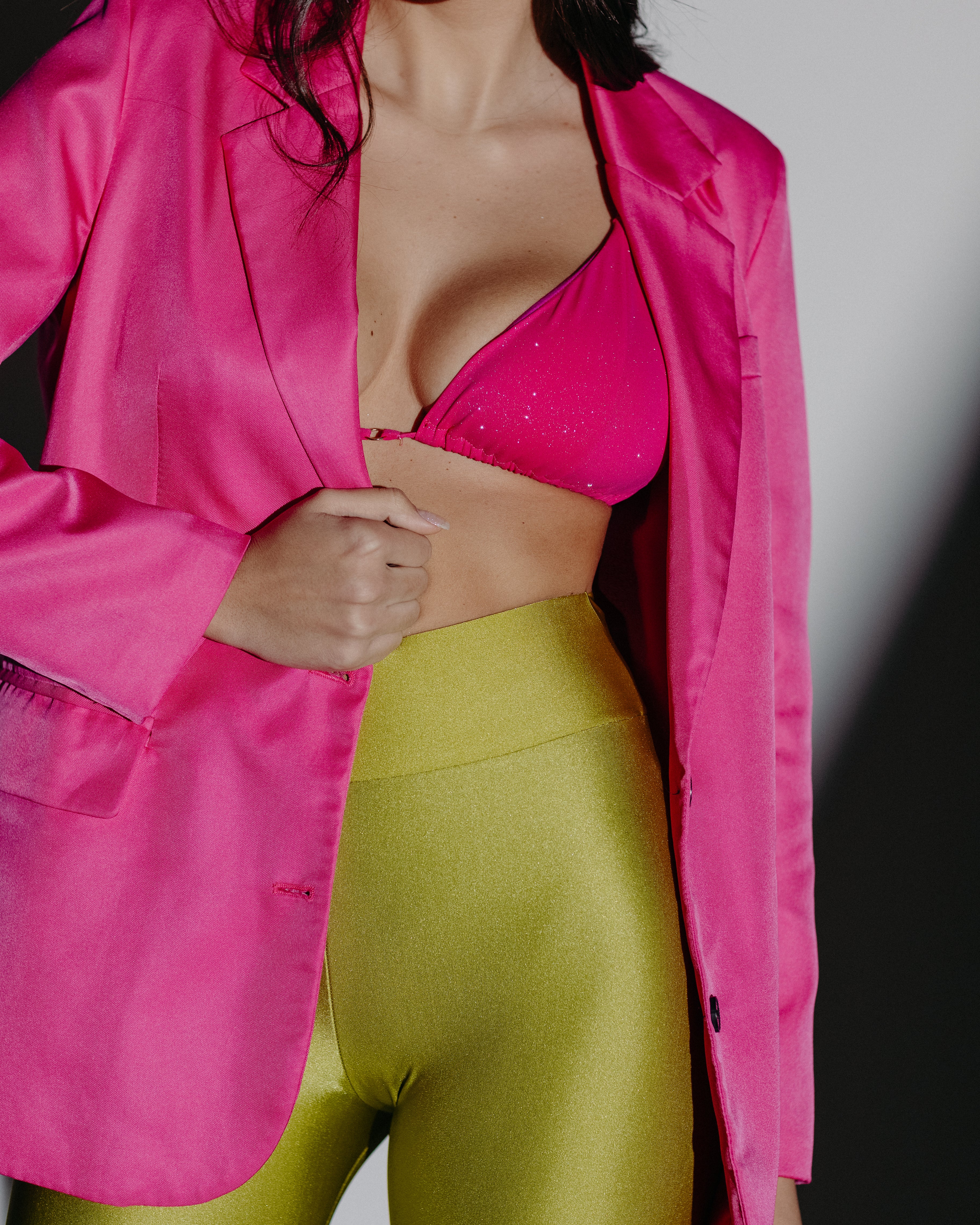LYCRA & ITS FEATURES
Features:
Spandex (or elastane) is a synthetic polyurethane fiber widely used to stretch fabrics. The use of the term Lycra to generically indicate the polyurethane fiber is incorrect and discouraged by the trademark holder himself. This action has been very successful, but double-edged, now that it is no longer the market leader, the term has disappeared, in favor of a more generic stretch or elastic. The excessive regulation of the brand has finally relegated the use of this brand to very few products. The great elastic property of lycra depends on its chemical composition, and on the reaction of polyester with more crystalline segments. This also makes it very durable and strong.
History
In 1962 the elastane Lycra was dedicated only to the production of medical stockings. Subsequently, its use in the production of swimwear made the Lycra brand known to the general public. At the end of the 1960s, thanks to this fiber, it was possible to obtain light, well-fitting swimsuits that dried quickly. A few years later, in 1979, Lycra fibers also found space in the production of transparent tights, making them well-fitting to the legs and reducing the risk of stretch marks. In the mid-80s it was the turn of sportsmen, who from that moment could count on tight-fitting uniforms and clothing, perfect for modeling themselves on their own body figure. Among the most recent applications of elastane we find the production of fabrics to make super stretch leggings and jeans.
Types of Lycra
Lycra fiber has the ability to stretch up to 7-8 times, and then return to its original size. In the production of fabrics, elastane fibers are never used alone, but always in combination with other natural or synthetic fibers, such as cotton. Moreover, in percentage terms, elastane fibers are always clearly in the minority. In particular, the elastane yarns can be used naked (a simple elastane yarn is added to the structure of the knit created by the main yarn) or covered with one (single spiral) or two (double spiral) yarns of synthetic origin (such as e.g. polyamide) or natural (e.g. wool and cotton), continuous or discontinuous. There are different types of Lycra yarns on the market, varying in brightness and degree of fineness. There are therefore fibers that are shinier and less glossy, thinner and thicker (therefore more resistant). All this allows to obtain a very wide variety of elastic yarns, which can give life to rather heterogeneous materials, suitable for any type of garment, from shirts to dresses.
How is lycra used?
Lycra or elastane is usually used for sports clothing such as artistic or rhythmic gymnastics, or even for swimwear. It is often used to create swimwear or women's underwear. It is a very robust fabric, as it is resistant to sunlight, washing and sweat, it is a durable fabric. Lycra is never pure, rather it is mixed with other fibers. For example, for clothing we can find percentages of 2-3%, to still give some elasticity. In costumes and uniforms for various sports, lycra can be present up to 25-35%.
What are the properties and benefits of lycra?
Among the advantages attributed to Lycra by marketing campaigns, the most common are: * lightness and ability to stretch up to 5-8 times without breaking; this translates into high comfort, excellent fit and freedom of movement; * re-entry force and shape retention (it can undergo various stretching cycles, perfectly recovering the initial length as soon as the tension loosens); * abrasion resistance and superior durability. Advantages, however, confirmed and recognized by many users who wear lycra garments in everyday life. The lycra fabric is elastic while keeping the shapes unchanged.
The most important properties of lycra fabric are:
- Strong and resistant over time
- Comfortable to wear
- Resistant to water and mold
- Elastic and flexible
- It can extend up to 5 times its initial length
- The thread retains its elasticity and the shape it had in the beginning
- It is always mixed with other fibers
- Machine washable garments

Leave a comment
This site is protected by hCaptcha and the hCaptcha Privacy Policy and Terms of Service apply.